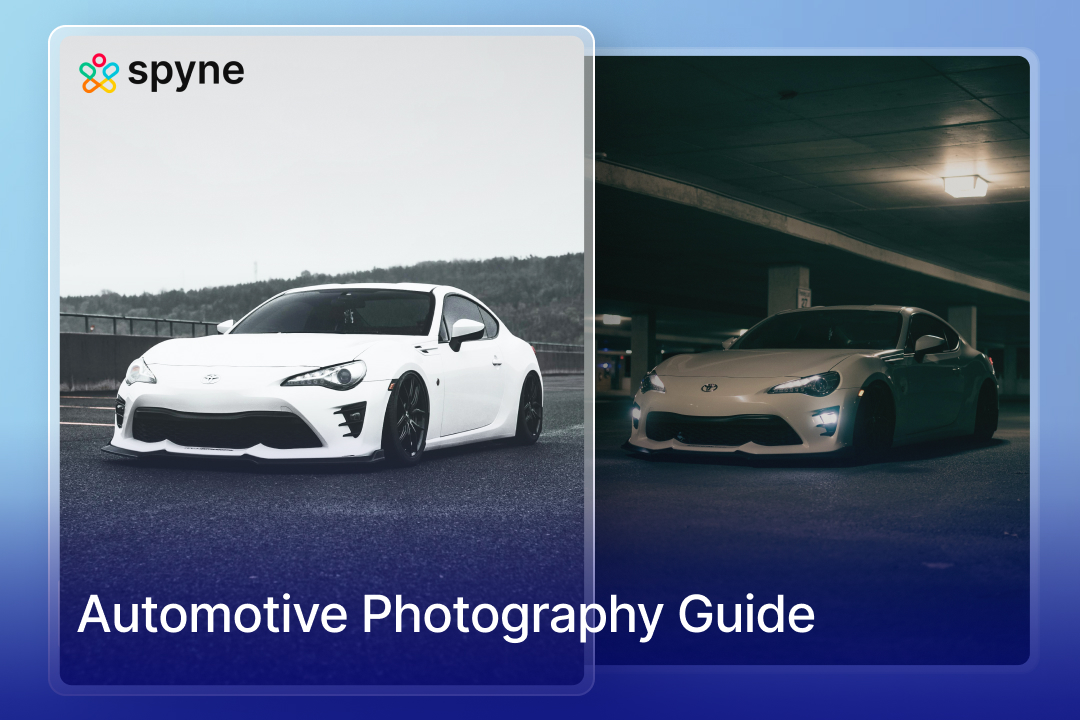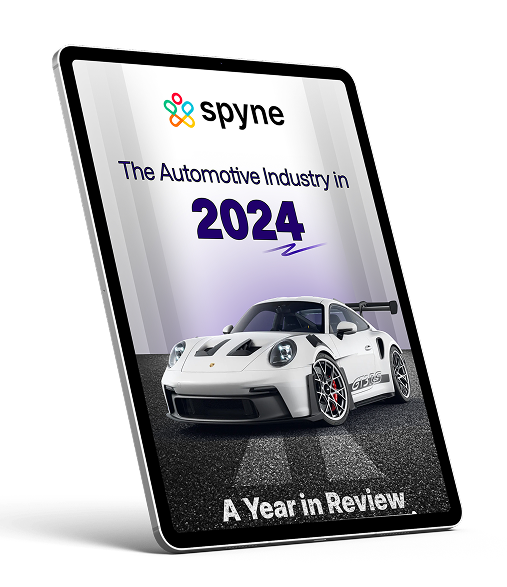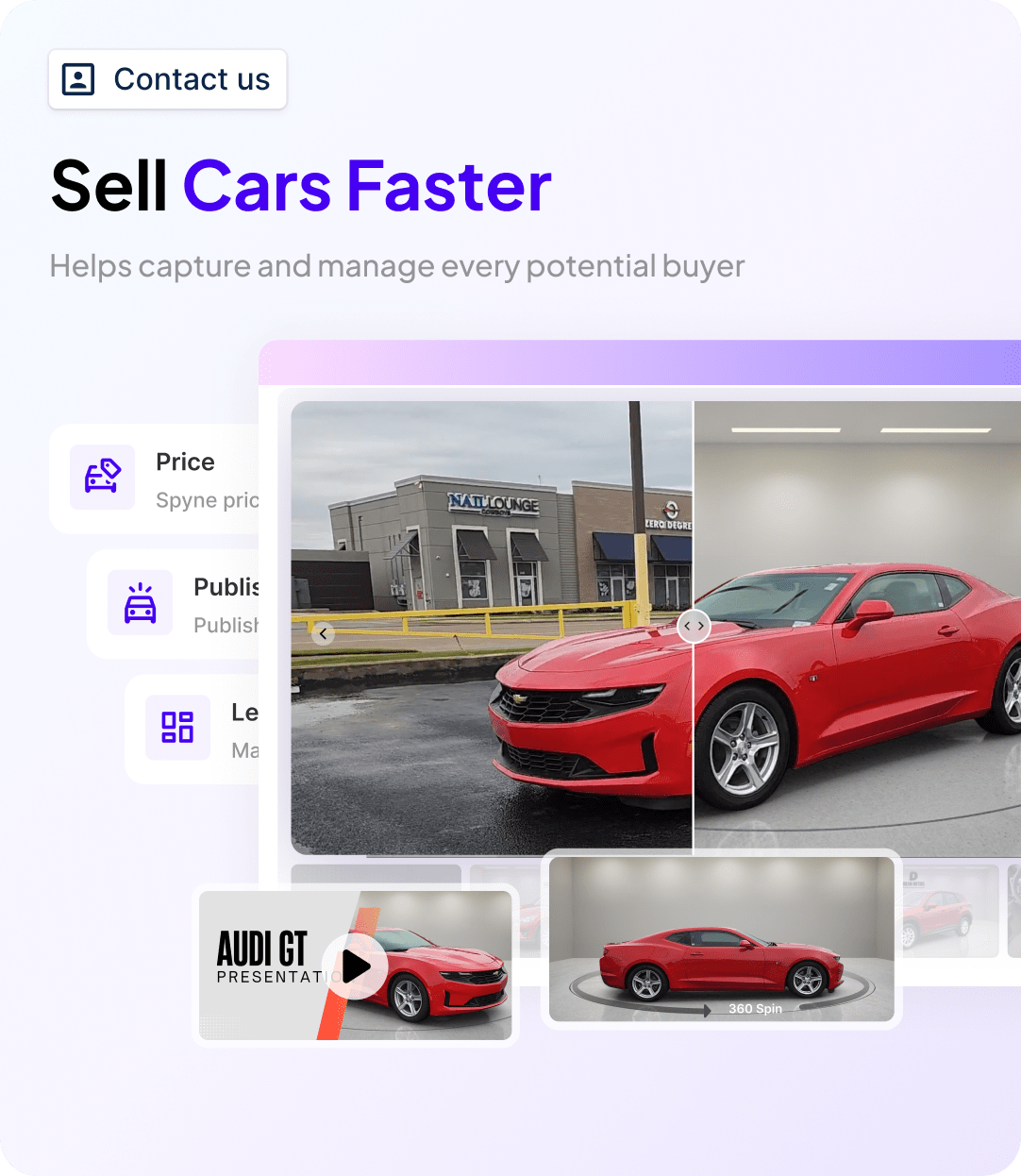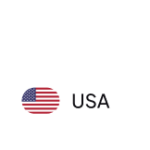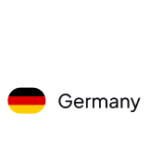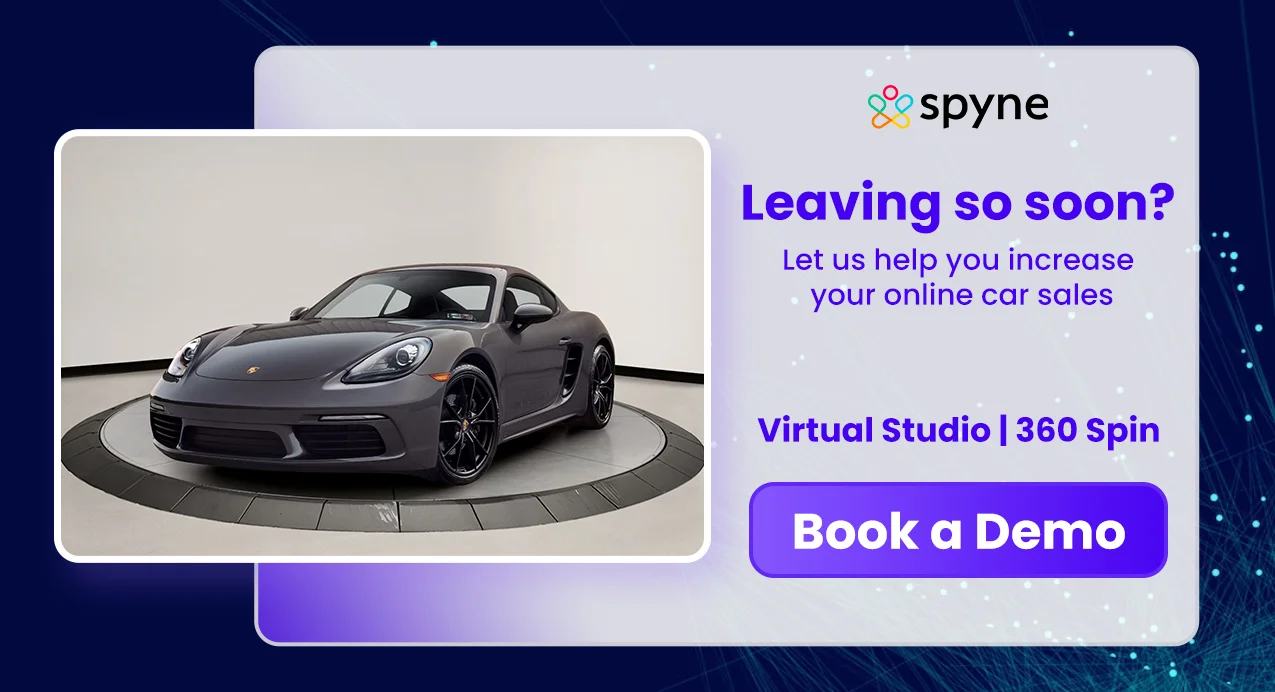While browsing vehicle listings online, you may have noticed a difference. Some listings feature sleek, well-lit shots that look like they belong in a magazine. Others show uneven lighting, poor angles, or inconsistent backdrops. In the automotive industry, the way a vehicle is photographed and listed has mammoth implications than just aesthetics.
High-quality, standardized photography is now central to how dealerships, manufacturers, and marketplaces sell cars in a digital-first world. With over 90% of buyers beginning their journey online, visuals shape brand perception, influence trust, and directly impact lead generation and conversion rates.
Businesses today need images that works across multiple channels like websites, social platforms, marketplaces, and print, while also aligning with brand guidelines and sales goals.
Let’s break down this automotive photography guide and explore best practices, workflows and emerging trends that define how vehicles are marketed in the digital age.
The Business of Automotive Photography
Automotive photography can be defined as the specialized art of taking pictures of vehicles in a way that shows off their best features, styles, and unique details. The term automotive covers every aspect of motor vehicles be it design and engineering or production and use. Through controlled lighting, thoughtful composition, and carefully chosen settings, automotive photographers reveal a vehicle’s beauty, performance, and lifestyle appeal.
Example: To list a Porsche 911 Carrera S online, a dealer might want to get it shoot at sunrise against a cityscape. In the process, an automotive photographer may use low-angle front three-quarter shot with a 24–70mm lens to emphasize its sleek silhouette and stance. Whereas for detail shots, he may use a 50mm prime to highlight the hand-stitched leather seats, alloy wheels, and touchscreen console. This use of setting, angles and detail shots presents the car as a lifestyle choice, creating desire and encouraging buyers to take the next step, while making use of some of the best techniques of photographing an automotive.
As an industry leader notes, “over 90% of car buyers research vehicles online before visiting a dealership,” making high-quality photos the most influential factor in digital car merchandising and in driving buyer engagement.
Who Are the Key Stakeholders?
Automotive photoshoot connects multiple players in the industry, each with different priorities:
- Dealerships: Use photography to market inventory quickly and stand out on listing platforms.
- Manufacturers: Need consistent, brand-compliant visuals across regions and campaigns.
- Marketing Agencies: Leverage images for ads, social campaigns, and digital creatives.
- Photographers & Studios: Provide technical expertise and creative execution while balancing cost and speed.
Business Objectives of Automotive Photography
Every vehicle image you publish should serve a measurable business goal. Common objectives include:
- Lead Conversion: High-quality car images increase trust, making buyers more likely to book a test drive.
- Inventory Marketing: Faster time-to-market for vehicles translates into quicker sales cycles.
- Social Media Engagement: Striking visuals improve click-through rates and engagement on Instagram, Facebook, and TikTok.
- Advertising ROI: Better photography reduces wasted ad spend by improving CTRs and conversion.
KPIs & Metrics That Matter
Businesses investing in automotive photography must track performance. Here are the most relevant KPIs:
- Cost per Image: How much does each photo cost after factoring in equipment, labor, and post-production?
- Time per Shoot: Faster turnaround = faster listings = faster sales.
- Engagement Metrics: Likes, shares, CTR, and dwell time on vehicle detail pages.
- Conversion Rates: Do better images translate into more leads or higher closing rates?
Standardisation and Best Practices in Automotive Photography
In the automotive industry, car photoshoots establish a consistent visual language that builds buyer confidence, supports large-scale inventory management, and thereby strengthens brand identity. Standardization and best practices are considered to be critical because they ensure every image meets the same professional benchmark, whether it’s a dealership showcasing hundreds of vehicles, an OEM driving a nationwide campaign, or a marketing agency producing digital catalogs.
Standard Shots & Angles
Establishing a consistent set of standard shots is a core technique in automotive photography. By following predefined angles and perspectives, dealerships, OEMs, and agencies ensure every vehicle is captured with the same clarity and professionalism. In this automotive photography guide, we’ve listed of them have been listed below for dealerships and businesses to refer to:
- Hero Shots (¾ Angles): The cornerstone of any set, usually captured at the front three-quarter view. This angle highlights the vehicle’s proportions, body lines, and stance, making it ideal as the lead or cover image for listings and advertisements.
- Side and Rear Views: Full side shots show body style, wheelbase, and profile, while rear views highlight taillights, exhaust design, and trunk access.
- Interior Cabin Shots: Wide dashboard shots, steering wheel, and seating arrangements that showcase technology, comfort, and space.
- Detail Shots: Close-ups of design elements such as headlights, wheels, grilles, stitching, infotainment screens, or branded audio systems.
- Functional Shots: Practical views like cargo space, seat-folding options, odometer readings, and safety tech (parking sensors, cameras, airbags).
- Frontal View (Head-On): A straight shot of the grille and headlights that reinforces brand identity and design presence.
- Wheel and Tire Shots: Captures rim design and tire condition. For luxury or sports cars, these shots highlight performance appeal; for used cars, they demonstrate authenticity and wear.
- Engine Bay: Useful for performance, classic, or pre-owned vehicles where engine condition matters.
- Roof and Sunroof Views: Top-down shots or angled views showcasing panoramic roofs, convertible tops, or roof rails.
- Seating & Upholstery Details: Focused images of leather, stitching, seat adjustability, or third-row seating.
- Lighting Features: Close-ups of LED headlights, taillights, DRLs, or fog lamps.
- Unique Selling Features: Any distinctive element, such as custom modifications, infotainment upgrades, or luxury add-ons.
Lighting and Color Accuracy
Lighting and color accuracy are central to automotive photography, especially for digital catalogs and online vehicle configurators where buyers rely on visuals to make decisions. When tones are inaccurate or lighting is poor, customers may feel misled once they see the vehicle in person, eroding trust and potentially costing a sale.
- Diffuse Lighting: Soft, even lighting reduces harsh reflections and shadows that distort the vehicle’s lines. Shooting during overcast conditions, in shaded daylight, or using controlled studio lighting ensures cars appear polished without distracting glare on windows or paint.
- Color Calibration: Calibrated monitors, color cards, and editing tools ensure paint colors and interiors match their true appearance. This is especially important for OEMs, where online configurators must replicate real-world options precisely, so customers know exactly what to expect when they step into a showroom.
- Neutral Backgrounds: Grey, white backgrounds and clean studio-style help prevent unwanted color casts that can alter the car’s paint tones. They also keep the viewer’s focus on the vehicle itself, creating a professional and consistent look across hundreds of listings.
File Formats, Resolution, and Delivery Protocols
Even the best-shot photos lose impact if they aren’t delivered in the correct technical standards for marketplaces, dealer websites, and manufacturer platforms. Optimizing formats, resolution, and delivery processes ensures images load quickly, display clearly, and can be distributed at scale without errors.
File Formats
- JPEG: industry standard for online listings (universal compatibility).
- TIFF/RAW: used in print campaigns, high-end ads, or archival purposes requiring maximum detail.
Resolution
- Minimum: 2,000 pixels on the long side for online clarity.
- Higher resolution required for print catalogs, billboards, or zoomable configurators.
Compression Standards
- Balanced optimization to preserve detail while ensuring fast load speeds.
- Prevents blurred features (like trims or stitching) or sluggish page performance.
Delivery Protocols
- Standard file naming conventions (e.g., VIN + shot type).
- Metadata tagging for easy processing in DMS/CRMs.
- Organized folder structures to streamline uploads to marketplaces.
Workflow and Tools Behind Automotive Photography
Professional automotive photography goes far beyond snapping a few glossy shots of a car. It’s a production pipeline, a structured workflow powered by technology that turns vehicles into marketable assets.
Here’s how the workflow and tech stack come together to make that happen:
Pre-Shoot Planning
Before the cameras come out, successful dealerships plan every detail of the shoot. Scheduling time slots, creating shot lists, and prepping vehicles (cleaning, detailing, and staging) ensure efficiency on set. This level of organization minimizes reshoots and maximizes productivity, critical for dealerships that need hundreds of cars photographed each month.
- Scheduling & Coordination: Aligning photo sessions with vehicle availability to minimize downtime on the lot.
- Shot Lists: Predefined angles and compositions (exteriors, interiors, details) so nothing gets missed.
- Vehicle Prep: Cars are cleaned, staged, and sometimes accessorized, ensuring they’re “listing ready” before the camera rolls.
- Environmental Setup: Checking lighting conditions or choosing studio vs. outdoor settings for maximum clarity.
Photography Tools & Equipment
Photography requires gear that balances quality with efficiency. This automotive photography guide provided you with some tools you ought to include in the process:
- High-resolution cameras for sharp, detailed images that buyers can zoom into.
- Drones for dramatic aerial shots that showcase dealerships or premium vehicles.
- Lighting rigs & reflectors for even illumination, especially in indoor or harsh lighting conditions.
- 360° cameras and turntables for immersive, interactive views that are becoming a dealership standard.
Software & Automation
Capturing images was just step one. The real efficiency gains come in the post-production stage, powered by software and AI automation:
- Photo Editing Suites (e.g., Spyne’s Image Editor, Lightroom, Photoshop) for basic retouching, exposure corrections, and color balancing.
- AI Image Editor that auto-correct sharpness, contrast, and even reflections in seconds.
- Background Removal & Virtual Studio to swap cluttered backdrops for professional, branded environments, ideal for dealerships with space constraints.
- Batch Processing to handle hundreds of images simultaneously, reducing manual editing effort.
Automotive Photography Marketing & Distribution Strategy
A high-quality photo is only half the battle, it’s the distribution that determines whether it actually sells a car. For dealerships, every car photo is a 24/7 sales asset. When deployed strategically across websites, marketplaces, social media, and print, these high-quality images build trust, drive engagement, generate leads, and push potential buyers closer to purchase. Here’s how automotive photography drives impact across the four key marketing channels.
- Dealership Websites: Your digital showroom. Clear, consistent photos build trust and help buyers pre-qualify their interest before visiting.
- Marketplaces (Autotrader, Cars.com, TrueCar, CarGurus): Competitive spaces where photos are often the only differentiator between your listing and hundreds of others.
- Social Media Platforms (Instagram, TikTok, Facebook): Visual-first channels where lifestyle-style photography, reels, and car spins spark buyer emotion and engagement.
- Print Ads & Brochures: Still essential for premium campaigns, local promotions, and luxury car branding.
Optimizing Photos for Each Channel
One of the biggest mistakes dealerships make is treating every channel the same. A website visitor, a marketplace shopper, a social media scroller, and a local resident seeing your billboard are all in different stages of the buying journey. The most successful dealerships customize photo sets to match the intent of each channel.
Dealership Websites
- High-resolution images only: Crisp details communicate professionalism and instill trust. Blurry shots instantly cheapen your brand.
- Uniform photo sequence: Always present cars in the same order (front, rear, side, interior, details) to create a familiar, intuitive browsing experience.
- 360 spins & interactive galleries: Replicate the in-person showroom feel by letting customers “walk around” the vehicle virtually.
- Highlight key features: Include close-ups of infotainment screens, stitching, wheels, and headlights to satisfy detail-oriented buyers.
- Fast load times: Optimize images for the web without compromising quality to reduce bounce rates.
Online Marketplaces
- Lightweight yet detailed images: Compress files for quick load times but ensure interiors, trims, and features are visible.
- Neutral, distraction-free backgrounds: Remove clutter (other cars, people, signage) to keep focus on the vehicle.
- Consistent angles & framing: Professional uniformity helps build trust when buyers view multiple listings.
- Marketplace-recommended resolution: Upload at the highest resolution platforms allow pixelated images scream unprofessional.
- Feature-driven close-ups: Highlight selling points like mileage indicators, infotainment systems, or safety features.
Social Media
- Lifestyle-driven shots: Showcase cars in real contexts like on a scenic road, during golden hour, or at delivery-day moments.
- Platform-first formatting: Prepare verticals for Reels/TikTok, carousels for Instagram, and square images for Facebook.
- Mix stills with short-form video: Reels and TikToks consistently outperform static posts, driving up to 150% higher engagement.
- Highlight uniqueness: Capture design details like LED headlights, alloy wheels, or panoramic sunroofs, in creative close-ups.
- Behind-the-scenes content: Share candid dealership moments like detailing, prepping cars, or happy customer deliveries to humanize your brand.
Print Ads
- 300 DPI image quality: Essential for large print formats like billboards, brochures, and magazine spreads.
- Minimalist hero shots: A single striking angle works better than cluttered visuals; bold and clean leaves a lasting impression.
- Consistent brand identity: Align fonts, colors, and photography style with your digital campaigns for seamless recognition.
- Natural editing: Avoid over-saturation or artificial tones, realistic, sharp images appear more premium in print.
- Composition matters: Leave space for logos, contact details, or offers without overwhelming the vehicle shot.
Trends & Innovations in Automotive Photography
The world of automotive photography is evolving at lightning speed. Dealerships and car brands no longer rely on traditional photo shoots alone, technology is reshaping how cars are captured, presented, and marketed. What once required physical studios, heavy equipment, and long production hours is now being reimagined with automation and digital tools. Here’s a look at the key innovations every dealership and marketer should keep an eye on.
1. AI-Powered Editing & Image Generation
Artificial Intelligence is transforming automotive photography by making image production faster, smarter, and more scalable. Instead of relying on time-consuming manual edits, dealerships can now create consistent, professional, and highly engaging visuals with AI-powered tools.
- Advanced Editing: Car background removal tool, shadow/reflection correction, number plate blur, and branded templates.
- Car Visualization: Interactive car color changer, paint simulators, and wrap previews.
- AI Automation: Auto-fix lighting, reflections, and maintain visual consistency.
- Bulk Editing: Apply edits to hundreds of images simultaneously for scale.
2. 360 Spins & Virtual Showrooms
Static photos are no longer enough in today’s digital-first car buying journey. Buyers want to explore vehicles online, interact with them, and build confidence before visiting a dealership. That’s why 360 car photography and virtual showrooms are becoming essential tools for modern automotive retail.
- Builds trust & confidence: 72% of car buyers say 360° spins improve their confidence in making a purchase.
- Unlimited inventory online: Virtual showrooms powered by AR/VR let dealerships display their full catalog without physical space limits.
- Immersive experiences: Customers can “walk through” virtual lots, sit inside cars, and customize features from home.
- Faster sales cycles: Interactive content reduces buyer hesitation and speeds up decision-making
Conclusion
Automotive photography today goes far beyond glossy visuals, it’s a business engine that drives sales, marketing, and customer trust. Dealerships, manufacturers, and agencies depend on standardized, high-quality images to showcase inventory, build credibility, and influence buyer decisions. From consistent angles and accurate lighting to optimized delivery formats, standardization ensures both brand appeal and operational scalability.
With AI-driven editing, automated workflows, and 360° spins, businesses can cut costs, speed up production, and deliver immersive digital experiences. When aligned with KPIs such as lead conversions, engagement, and ROI, photography becomes a measurable growth tool rather than just an expense.
Looking ahead, innovations like virtual studios, AR/VR showrooms, and sustainable workflows will reshape how vehicles are marketed online. Companies that embrace these changes will gain a decisive edge. And with partners like Spyne, automotive businesses can future-proof their visual strategy and scale with confidence.
Frequently Asked Questions
A professional automotive photoshoot produces good vehicle photos that highlight every detail buyers care about. As outlined in this automotive photography guide, high-quality images build trust, boost engagement, and drive faster decisions. Dealerships using professional automotive photography see reduced time-on-market and higher lead conversion compared to listings with poor visuals.
Good photos from an automotive photoshoot are leveraged across dealership websites, online marketplaces, social media, and print ads. As this automotive photography guide states, these images are also integrated into CRM and inventory systems. Automotive photography ensures dealerships maintain strong brand presence and capture buyer attention across all digital and offline channels.
Manual photoshoots can be costly, but modern solutions like Spyne make automotive photography affordable and scalable. Dealerships no longer need big studios or heavy editing. By following a streamlined automotive photography guide, Spyne delivers professional, good photos at a fraction of the cost, ensuring faster sales without straining dealership marketing budgets.
Dealerships can track ROI from an automotive photoshoot by monitoring key metrics like time-on-market, lead conversion, and engagement on listings. As any automotive photography guide highlights, good vehicle photos lead to faster sales and higher click-through rates, proving that quality automotive photography directly impacts revenue and overall marketing efficiency.
Professional automotive photography ensures consistent, high-quality visuals that attract serious buyers. Good photos build trust, highlight features, and elevate dealership branding. Following an automotive photography guide helps create listings that convert faster. An expert automotive photoshoot pays for itself by boosting sales velocity, customer confidence, and long-term marketplace performance.
Yes. Standardized photos from a structured automotive photoshoot increase buyer trust and click-through rates on marketplaces. An automotive photography guide ensures consistency across angles, lighting, and presentation. Dealerships using uniform automotive photography stand out, reduce bounce rates, and improve discoverability, directly enhancing their marketplace performance and sales outcomes.
Many dealerships skip professional automotive photography and rely on inconsistent, low-quality images. Common mistakes include poor lighting, cluttered backgrounds, and irregular angles. Without following an automotive photography guide, listings appear unprofessional. A proper automotive photoshoot with standardized good photos avoids these errors, ensuring vehicles look appealing and drive buyer confidence.

